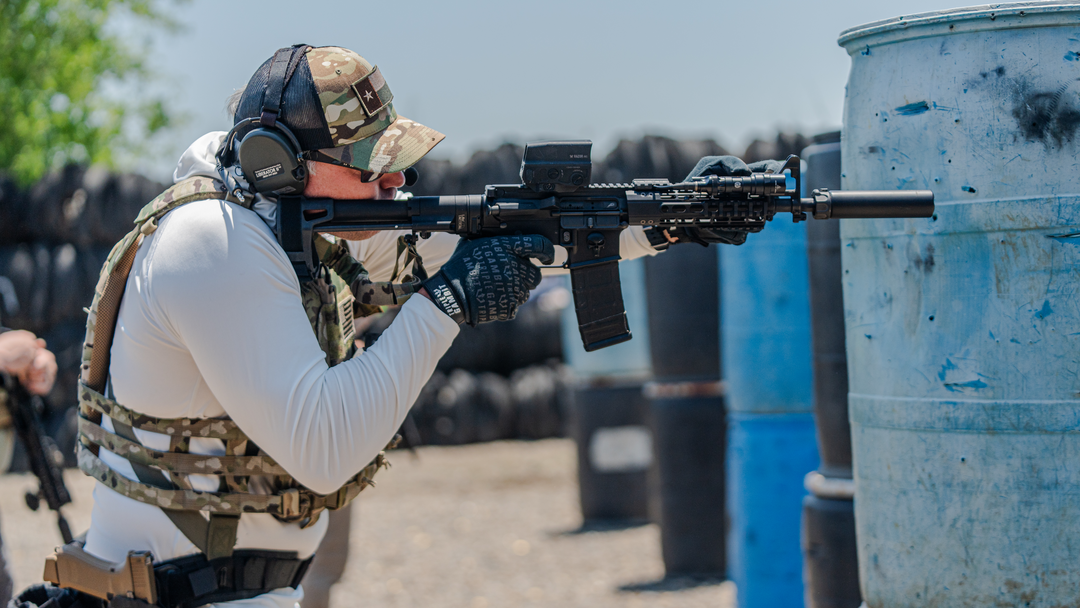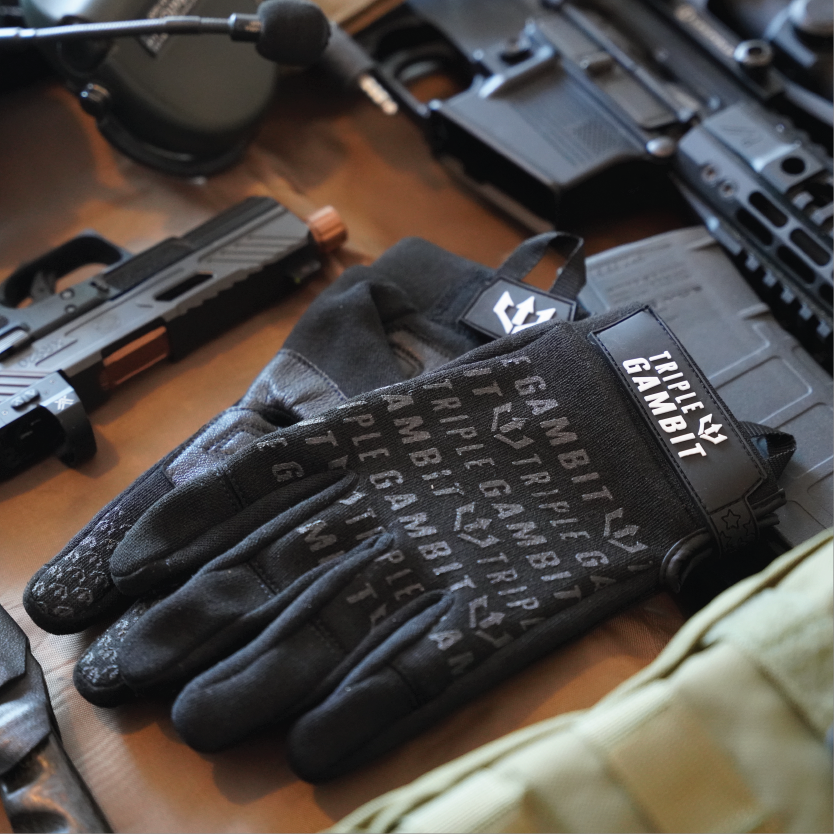A Basic Understanding of Clay Shooting

Table of Contents
- A Brief Dive into the History of Clay Shooting
- Different types of Clay Shooting
- Clay Shooting Targets
- Shotguns for Sporting Clays
- The Essential Gear
- Conclusion
Brief History
Clay target shooting traces its roots back to the era of live-pigeon trap shooting in the UK. As competitors sought tangible proof of superior marksmanship, a need arose for a structured scenario where multiple flying objects, clays, could be easily counted, and target distribution was consistent for all participants.
In an effort to mimic live-pigeon trap shooting, early clay target shooting featured traps in front of the shooter, rising at agreed-upon distances. The first inanimate targets were hollow glass balls filled with feathers and initially emerged in Boston around 1866 before making their way to Britain in 1875.
In 1877, American Capt. Adam Bogardus patented the renowned glass ball trap. This trap incorporated a leaf spring mounted on a board, accompanied by an upright iron rod featuring three notches. A trigger system was established with a string connected to the top, initiating the release of the spring when pulled, propelling the ball into the air. This innovative design gave rise to numerous imitators and advancements within the realm of ball traps.
In 1893, the Inanimate Bird Shooting Association was established in England, subsequently rebranded as the Clay Bird Shooting Association in 1903. This association organized yearly clay-pigeon-shooting contests, which continued until the outbreak of World War I. In 1921, the British parliament unanimously passed a bill making it unlawful to shoot birds from traps.
Understanding Different Clay Shooting Disciplines
Clay pigeon shooting encompasses over 20 different forms of regulated competition called disciplines, although most can be grouped under the main headings of trap, skeet, and sporting.
Types of Clay Shooting Targets
The targets utilized in this sport typically take the form of an inverted saucer (think frisbee), crafted from a blend of pitch and pulverized limestone rock. This composition is engineered to endure high-speed launches from traps while remaining easily breakable upon impact with just a few lead or steel pellets from a shotgun.

These targets commonly exhibit a fluorescent orange or black hue, with white or yellow also frequent choices to ensure visibility against diverse backgrounds and lighting conditions. Precision in weight and dimensions is paramount, adhering to stringent international standards. Various target types cater to different disciplines, with a standard 108 mm size prevalent in American Trap, Skeet, and Sporting Clays. International variations of these disciplines utilize a slightly larger 110 mm diameter. All trap and skeet disciplines employ the standard 108/110 mm target. Sporting shoots encompass the full range of targets (except ZZ) to embrace the diversity characteristic of this discipline.
In all three sports employing shotguns, the sporting disciplines feature sub-classifications based on the type of game the clay target represents, such as pigeon or rabbit. Targets can be projected airborne or along the ground (rolling).
The fundamental method of launching a clay target involves manual throwing, either into the air or along the ground. This straightforward approach is often employed by "trick shot" shooters, some capable of throwing and hitting up to ten targets individually before they land. Nevertheless, a variety of devices, from plastic sling-like mechanisms to modern, automated machines, have been developed to facilitate consistent and efficient target projection.
Target Types
- Standard | The most common target, weighing 105 g, with a 110 mm overall diameter and 25–26 mm height for international competitions. For American competitions, it weighs approximately 100 g, with a 108 mm overall diameter and 28.0–29.0 mm height.
- Midi | Resembling the standard saucer but with a smaller 90 mm diameter, midi targets are faster than standard types.
- Mini | smaller target at 60 mm in diameter and 20 mm in height, often likened to a flying bumblebee.
- Battue | A very thin target measuring about 108–110 mm in diameter, known for its rapid flight and sudden descent, simulating a duck landing.
- Rabbit | A thicker, standard 108–110 mm diameter flat target designed to run along the ground, mimicking the movement of a rabbit.
- ZZ | This plastic target, attached to the center of a two-blade propeller, zigzags in flight in an entirely unpredictable manner, adding an extra layer of complexity to the sport.
Shotguns for Sporting Clays
Practically any shotgun can serve well for sporting clays, skeet, or trap; however, discerning sports competitors tend to favor specific characteristics that provide slight advantages.

When engaging in clay shooting, most enthusiasts opt for either a 12-gauge or 20-gauge shotgun. It's not unusual to spot shooters using smaller calibers like 28-gauge or .410 bore shotguns. These smaller gauges are often chosen by younger or older individuals who are sensitive to higher recoils. Some shooters, seeking an additional challenge, opt for smaller calibers because they throw less lead downrange, making it more challenging to hit clay birds. Choosing the highest gauge you're comfortable with is recommended, taking into consideration your reaction to recoil, as you'll be firing multiple shots.
Concerning the action, many sporting shotgun enthusiasts steer clear of pump action due to the potential noise that could trigger sound-activated launchers to release a target. Additionally, pump action may impede follow-up shots and the shooter's ability to "stay in the gun," which involves smoothly rotating and tracking the flight of the target with the shotgun. In clay shooting, participants are typically allowed to fire twice at a given target. Even if they hit the target on the first shot, some shooters fire a second shot at larger fragments of a broken clay to practice the concept of staying in the gun.
A good shotgun for clay shooting should possess a combination of reliability, accuracy, balance, fit, and recoil management.
Essential Shooting Gear
Participating in clay shooting activities requires some essential gear to ensure safety, accuracy, and an overall enjoyable experience. Here's a list of key gear for clay shooting:
- Shotgun | Choose a shotgun with an appropriate gauge based on your comfort level with recoil and shooting preferences.
- Ammunition | Purchase the correct ammunition for your chosen shotgun. Shells for clay shooting are typically target loads with smaller shot sizes.
- Ear Protection | Protect your hearing with earplugs or earmuffs. Clay shooting is loud, and consistent exposure without protection can cause damage.
- Eye Protection | Shooting glasses are essential to shield your eyes from debris, clay fragments, and any potential hazards.
- Shooting Vest | A shooting vest for holding extra shells and empties. It also provides padding for the shoulder, reducing the impact of recoil.
- Shooting Gloves | Protects your hands from the recoil and ensure a better grip on the shotgun. Gloves should be flexible and not interfere with your trigger contact.
- Range Bag | A bag to carry and organize your shooting accessories, including extra shells, cleaning supplies, and personal items.
- Choke Tubes | Depending on the type of clay shooting, having a selection of choke tubes will help adjust your shotgun's pattern and improve accuracy.
- Cleaning Kit | Maintain the cleanliness and functionality of your shotgun with a cleaning kit.
- Comfortable Clothing | Wear appropriate clothing for the weather. Comfortable and breathable attire is crucial for an enjoyable experience.
- Sturdy Footwear | Choose footwear suitable for the terrain, especially if you're navigating uneven or potentially muddy ground.
Final Thoughts
Clay shooting offers a rich and varied experience steeped in tradition and skill. From its historical roots in live-pigeon trap shooting to the diverse disciplines of trap, skeet, and sporting clays, enthusiasts have embraced this sport for its challenge and camaraderie. With an array of target types and shotgun choices, participants can tailor their experience to their preferences and skill level.
Whether aiming for the perfect shot in trap shooting, mastering the dynamic movements of skeet, or navigating the picturesque courses of sporting clays, clay shooting provides an immersive and rewarding pursuit for all levels of enthusiasts. With the right gear and dedication to practice, clay shooting offers endless opportunities for improvement and enjoyment on the range.






